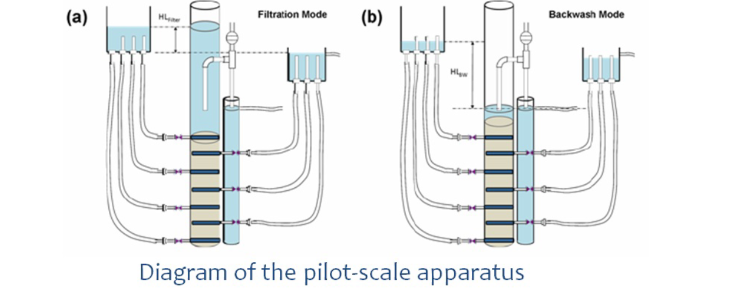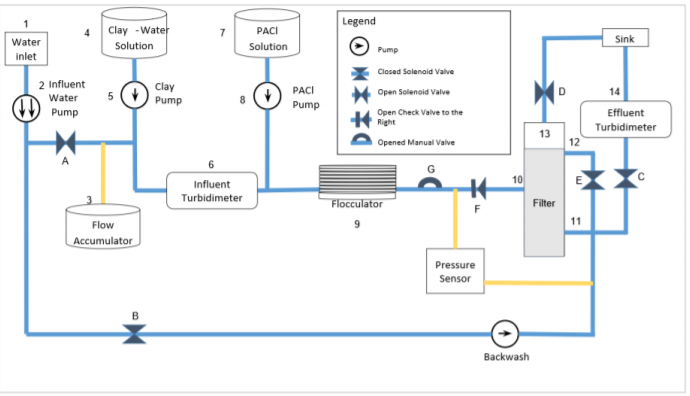Bradshaw Irish, Anna Lee, Rachel Philipson
December 12, 2011
Abstract
The Foam Filtration team is attempting to determine an application that utilizes polyurethane foam as a water filtration medium. Our work consists of running experimental trials which characterize the filtration properties of polyurethane foam. Polyurethane foam is not a conventional filtration medium, and through extensive work, we have proven that it can successfully produce effluent turbidities below US EPA standards. In addition to the characterization of foam as a filter medium, we have previously investigated the possibility of utilizing polyurethane foam at the point-of-use scale. A feasibility study determined that a polyurethane foam point-of-use unit would require the addition of coagulant and expensive moving parts. Therefore, the new focus of the Foam Filtration research team is on the design of an emergency water treatment system using polyurethane foam. This unit will consist of a roughing and finishing filter. Previous research characterized the performance of the finishing filter and current laboratory tests are focused on evaluating performance of the roughing filter.



















